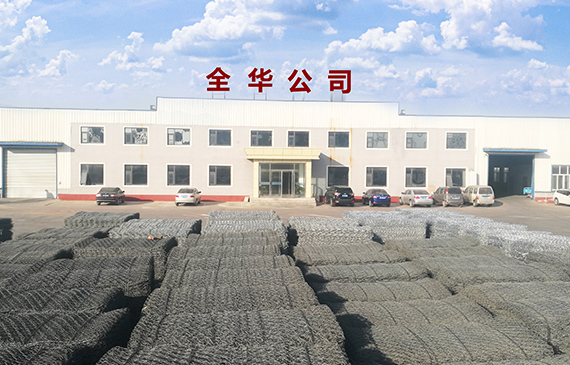നവം . 28, 2024 05:11 Back to list
How to Properly Fill a Gabion Basket for Optimal Stability and Aesthetics
Filling a Gabion Basket A Comprehensive Guide
Gabion baskets have gained significant popularity in various landscape and construction projects due to their versatility, durability, and aesthetic appeal. These wire mesh containers, filled with stones, gravel, or other materials, serve multiple purposes, including erosion control, slope stabilization, and decorative landscaping. If you're considering using gabion baskets in your next project, understanding how to fill them correctly is crucial for achieving the desired results.
What are Gabion Baskets?
Gabion baskets are traditionally made from heavy-duty galvanized steel wire that is woven into a mesh form. They can be filled with various materials, most commonly natural stones or rocks, though they can also be filled with recycled materials such as concrete or bricks. Gabions come in various sizes and shapes, making them versatile for use in walls, fences, or even artistic structures.
Preparing for Filling
Before you start filling gabion baskets, there are some preliminary steps to consider
1. Choose Your Location The area where you plan to place the gabion baskets should be evaluated. Factors such as drainage, slope, and soil stability will play critical roles in their effectiveness.
2. Select the Right Material The choice of filler material is essential; larger rocks (typically 3 to 6 inches in diameter) are often preferred for structural walls, while smaller aggregates may be used for decorative purposes. Ensure the materials are clean and free of dirt, dust, or organic matter to maintain their integrity.
3. Gather Your Tools Your filling project will require certain tools. Some essentials include work gloves, a shovel or spade, and possibly a hammer for securing the wire mesh, depending on the design and state of the basket.
The Filling Process
Now that you have prepared the location and gathered your materials, it's time to fill the gabion baskets. Follow these steps for an efficient and effective process
filling a gabion basket

1. Unfold the Gabion Basket Unpack and unfold your gabion basket carefully to avoid damaging the wire. Place it in its intended position, ensuring it is stable and aligned correctly.
2. Start with Larger Rocks Begin filling the basket with larger rocks at the bottom. This provides a solid foundation and helps stabilize the structure as you build up. Use your hands or a shovel to place the rocks into the basket, ensuring they are snugly fit together.
3. Layering After filling the bottom with larger stones, continue adding layers of smaller stones. This layering technique helps ensure even distribution and settling of the materials. Don’t hesitate to use a hammer to adjust rock placement if necessary.
4. Compact as You Go It's essential to keep the rocks compact as you fill the basket. This not only maximizes the load-bearing capacity but also minimizes the risk of shifting and creating voids. Make sure to fill any gaps with smaller rocks or gravel to enhance stability.
5. Top Off the Basket Once the gabion basket is filled to the top, make any necessary adjustments to ensure a uniform surface. Depending on the design, you may want to leave a little space at the top for aesthetic reasons or to allow for settling.
6. Secure the Basket After filling and adjusting the rocks, secure the basket’s lid if it has one. This will prevent the filler from spilling or shifting over time.
Finishing Touches
After the filling process is complete, consider potential finishing touches to enhance the appearance of the gabion. You can plant vegetation around the baskets, integrate lighting features, or blend the structure with surrounding landscaping to create a more natural look.
Conclusion
Filling a gabion basket can be a straightforward yet fulfilling task if approached correctly. By selecting the right location, materials, and techniques, you can create a robust structure that serves its intended purpose while adding visual appeal to your landscape. Whether you are building an erosion control wall, a decorative feature, or a boundary, gabion baskets offer a practical and attractive solution. So roll up your sleeves and dive into the rewarding world of gabion construction!
-
The Role of Galvanized Gabion Mesh in Riverbank Protection
NewsJun.26,2025
-
The Role of Gabion Basket Raised Bed in Sustainable Gardening
NewsJun.26,2025
-
Quality Assurance of Wire Mesh Gabion Baskets
NewsJun.26,2025
-
Installation Guide for Welded Gabion Box
NewsJun.26,2025
-
How to Choose the Right Gabion Box
NewsJun.26,2025
-
Different Types of Gabion Wire Mesh
NewsJun.26,2025
-
Why PVC Coated Gabion Mattress Is the Best Solution for Long-Term Erosion Control
NewsMay.23,2025






